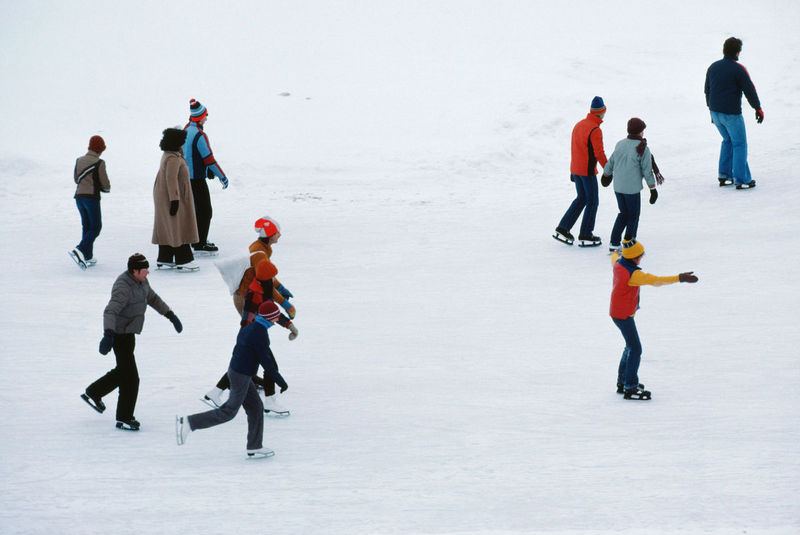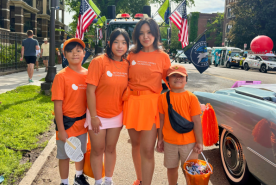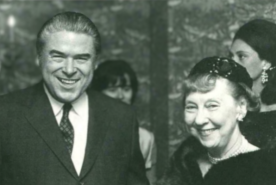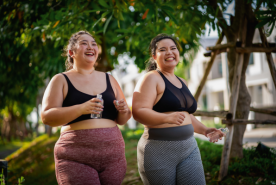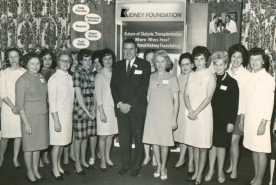January 20, 2015
Lauren Tigani, PT, DPT
The winter months can be a challenging time to stick to an exercise plan. The weather is colder, the daylight hours are shorter and other priorities can make it hard to establish a routine. While exercise in winter may be tough, it is very important for health.
Before having transplant surgery, exercise will help you to maintain strength and energy. After a transplant, exercise can help you return to your normal level of physical activity more quickly. Cardiovascular exercise is a type of exercise that focuses on increasing your heart rate and building your endurance. Resistive exercise uses resistance (body weight, bands, or weights) to build strength in your muscles. Both types of exercise have important benefits before and after transplant. An exercise program should include both cardiovascular and resistive exercises.
Here are some tips to keep in shape over the winter (and year round):
- Go for the goals. Remind yourself of your goals for exercise and staying in shape. Do you want to be able to walk the dog farther? Do you want to be able to play with your grandchildren? Do you want to feel healthier? Do you want to be able to pick up a suitcase by yourself? By starting with goals in mind, you are more likely to succeed.
- Bring fitness indoors. During the winter months, you may not be able to exercise outside, but there are many ways to stay active and warm. You can walk laps at the mall, take a fitness class at the gym, join a community dance class, lift weights, work out to a video at home, or even just dance. The most important component of an exercise program is finding something that you enjoy. If you’re having fun, you will be more likely to stick with exercise.
- Make the most of winter. While it’s easy to bring fitness routines indoors, perhaps you want to get outside and enjoy the winter months. If you are in good health and your doctor is agreeable, try some more daring winter sports. You could sign up for ice skating lessons, cross-country ski, or snowshoe. If you are not feeling as adventurous, get outdoors and build a snowman with the younger members of your family. Even just shoveling the snow and other winter chores count as exercise. Be sure to bundle up!
- Partner up! Enlist your friends and family as exercise partners. Set a date to meet a friend at the gym and you’re much more likely to follow through. Instead of meeting a friend for a meal or coffee, consider an exercise date. You could meet at the mall to walk briskly and window shop. Try stepping out of your comfort zone with a friend and take a dance or yoga class. Exercise can be social and fun.
- Pencil it in. Be deliberate about scheduling exercise and fitting it in, even when you’re busy. Once you write down exercise in your calendar, it becomes part of your schedule for the day and this can help you achieve your fitness goal. Additionally, track your exercise in a log. Seeing your achievements and progress will be very motivating.
- Don’t let a lack of time get you down. When your schedule is busy, remind yourself that exercise does not have to take long. There are many simple ways to increase your physical activity. Instead of using an escalator or elevator, take the stairs. Park your car farther away from the building to increase your steps. When your favorite song comes on the radio, dance for a minute or two. While you’re brushing your teeth, tighten the muscles in your bottom and thighs. Practice standing up from a chair without using your arms.
Throughout the winter months, there’s no need to hibernate! It’s possible to stay active and exercise. Experts recommend that you exercise for at least thirty minutes, five days a week. However, even five or ten minutes of movement a day can help with weight loss, improving your mood, and increasing your heart health. So, remember your goals for exercising, grab a partner, find an activity you enjoy, and get moving!
Resources
- http://www.heart.org/HEARTORG/GettingHealthy/PhysicalActivity/Physical-Activity_UCM_001080_SubHomePage.jsp
- Painter, PL, Hector, L, Ray, K, Lynes, L, Dibble, S, Paul, S, Tomlanovich, SL, Ascher, NL. (2002). A randomized trial of exercise training after renal transplantation. Clinical Transplantation; 74, 42-48.
- http://www.mayoclinic.org/healthy-living/fitness/in-depth/fitness/art-20048269
